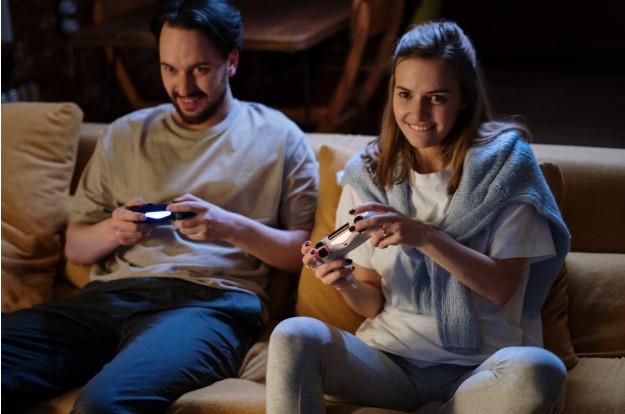It’s no longer a question of if you engage with digital entertainment—but how often. From morning playlists to bedtime videos, our days are punctuated by little moments of screen-based joy. Digital entertainment has evolved from a weekend treat into an everyday companion. It’s how we relax, connect, learn, and even express ourselves.
This shift isn’t just about convenience—it’s about creativity, accessibility, and personalization. The digital age has brought a buffet of entertainment options that suit every taste, schedule, and mood. And in this age of hyper-connectivity, entertainment isn’t just something you consume—it’s something you participate in.
Entertainment at Your Fingertips
Once upon a time, entertainment required effort. Renting a movie, going to the arcade, or tuning in at the right time meant planning ahead. Now, all it takes is a few taps. With smartphones, tablets, and smart TVs, everything from blockbuster movies to indie music to mobile games is always within reach.
And the best part? You’re in charge. Want to play a ten-minute game, watch a three-hour documentary, or stream a live concert from your couch? Go for it. The barriers have crumbled, leaving room for spontaneous, snackable, and immersive experiences all around.
Gamified Escapes
Gaming has played a massive role in the rise of digital entertainment. But it’s not just the big-budget console titles drawing crowds. Casual, quick-access games have soared in popularity—especially those that offer an easy entry point and instant gratification.
In particular, browser-based games and mobile-friendly platforms have opened up gaming to a wider audience than ever before. These games often prioritize aesthetics and pace, giving players a dopamine boost without overwhelming them with mechanics or tutorials.
That’s one reason platforms like UK slot sites are resonating with modern audiences. They deliver vibrant, fast-paced fun with minimal friction. Whether you’re in between meetings or relaxing at night, they offer an accessible way to switch off and engage.
The Rise of Bite-Sized Content
One undeniable trend in digital entertainment? Short-form content. With attention spans shrinking and schedules tightening, people gravitate toward platforms that offer quick, satisfying experiences.
TikTok, Instagram Reels, and YouTube Shorts have become daily habits for millions. These platforms thrive on creativity, humor, and relatability—often serving up unexpected inspiration or laughter in under a minute.
This style of content is also shifting how people define “entertainment.” You don’t need to set aside hours to unwind anymore. A few minutes here and there can be enough to reset your mood, give your brain a break, or spark a new idea.
Streaming Without Limits
Streaming services have reshaped our relationship with television, music, and movies. With endless catalogs and intelligent recommendations, it’s easier than ever to find exactly what fits your vibe.
And it’s not just the global giants like Netflix and Spotify that are making waves. Niche streaming platforms focused on documentaries, anime, indie films, or even live concerts are gaining popularity too. Audiences are carving out their own entertainment ecosystems based on personal taste rather than what’s simply “on.”
We’ve also seen a rise in interactive streaming—shows where viewers choose the plot path, or livestreams where audience participation shapes the outcome. The passive viewer is becoming a co-creator, and it’s unlocking entirely new forms of storytelling.
Digital Communities and Shared Joy
Entertainment in the digital age isn’t just solitary—it’s social. Comment sections, live chats, Discord groups, and watch parties turn personal screen time into collective experiences. You’re no longer just a viewer or a player; you’re part of a community.
During lockdown, many turned to digital platforms not just for distraction, but for connection. Virtual events, game nights, and group streams filled the gap left by in-person gatherings. And even now, they remain a staple for those who value accessibility, inclusivity, and ease.
From gamers coordinating raids to fans dissecting plot twists in comment threads, the joy of digital entertainment is amplified when it’s shared. It creates micro-communities united by curiosity, nostalgia, or pure fun.
Personalization and Power to the Viewer
One of the biggest shifts in the digital entertainment space is how personal it has become. Algorithms fine-tune suggestions based on your viewing history, time of day, and even the mood of your searches. This level of customization makes the experience feel more tailored—and more engaging.
Gone are the days of scrolling through channels hoping something decent is on. Now, your platform practically reads your mind, recommending shows, games, or creators that feel handpicked for you. This hyper-personal approach not only keeps users coming back but also helps smaller creators and niche genres find their audience.
Even platforms offering simple games or short content—like those found on uk slot sites—are incorporating personalization. Think themes, visuals, and mechanics that align with your preferences for a more satisfying and intuitive experience.
A Healthier Way to Unwind?
In many ways, digital entertainment has become a modern wellness tool. Whether it’s zoning out to lo-fi beats, playing calming games, watching ASMR videos, or laughing through memes—these little rituals help regulate stress and provide a mental breather.
That said, intentional use is key. The same platforms that offer joy can also overwhelm if not balanced. That’s why more users are practicing mindful screen time: setting app timers, curating their feeds, and being choosier about what they engage with.
When used with intention, digital entertainment becomes a form of self-care. It can boost your mood, spark creativity, and even create meaningful connections—especially when it fits your lifestyle rather than consumes it.

